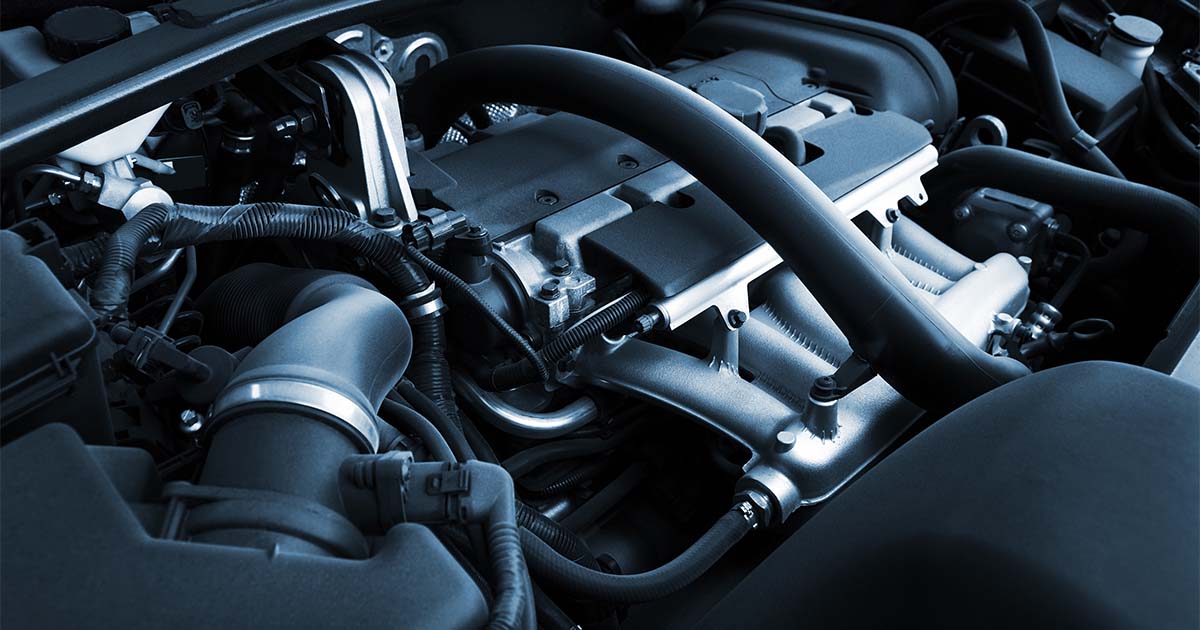
We collect basic website visitor information on this website and store it in cookies. We also utilize Google Analytics to track page view information to assist us in improving our website.
If you’re passionate about metal cutting or just keen to learn more, you’ve landed in the right place.
For over 38 years, Amber Steel has been at the forefront of metal cutting services, specializing in laser cutting, flame cutting, and plasma cutting. Our expertise has carved a niche in this cutting-edge industry, delivering precision and excellence across industrial projects big and small.
In our blog, we’ll share a mix of useful tips, innovative applications, our thoughts on sustainability in steel cutting, and more. Expect stories from the cutting floor, insights into how our processes can streamline projects across industries, and a few lessons we’ve learned along the way.
While we keep some of our trade secrets under wraps, this blog is designed to offer valuable nuggets of wisdom that you simply won't find anywhere else. Whether you’re a professional in the industry or someone fascinated by the possibilities of metal cutting, you'll find something of value here.
So, stick with us as we delve into the finer points of metal work. We’re glad to share our insights and lead discussions that matter to our industry.
How precision metal cutting propels the aerospace industry, from constructing lighter frames to enhancing aerodynamics.
The role of advanced metal cutting in automotive manufacturing, driving innovations in vehicle design and efficiency.
All about the robust and versatile process of flame cutting, ideal for tackling thicker metals with precision and ease.
Discover the art of crafting metal furniture, where cutting techniques meet design to create both functional and aesthetic pieces.
A behind-the-scenes look at the mechanics of metal cutting technologies and the science that makes them tick.
Laser cutting is where extreme precision meets efficiency, allowing for intricate designs and clean finishes.
The critical role of precise steel cutting in developing reliable and intricate medical devices.
How steel cutting supports the oil and gas industry with components that withstand extreme environments and pressures.
Known for its speed and versatility, plasma cutting slices through conductive metals with hot plasma.
Safety first! Tips and insights on maintaining a safe environment while handling powerful metal cutting equipment.
The backbone of construction, where steel fabrication and cutting technologies create frameworks that shape skylines.
Sustainability
A look at sustainability in metal cutting, focusing on practices that reduce waste and conserve energy to protect our planet.

In today's dynamic world of automotive manufacturing, precision and performance have become paramount considerations in every aspect of the production process. One cutting-edge technology that has significantly contributed to meeting these demands is plasma cutting.
The introduction of plasma cutting has revolutionized the way automotive components are fabricated. At its core, plasma cutting involves utilizing a high-velocity jet of ionized gas, or plasma, to melt through various types of metals with unparalleled accuracy. This technology has rapidly gained traction within the automotive sector due to its ability to deliver intricate cuts with exceptional precision. From chassis components to intricate engine parts, plasma cutting has proven to be a versatile solution that addresses the stringent demands of modern automotive design and manufacturing.
The automotive industry operates in an environment where even the slightest deviation from precision can have cascading effects on overall performance.
Whether it's ensuring a seamless fit between parts, optimizing aerodynamics for fuel efficiency, or enhancing safety through well-constructed components, precision stands as the cornerstone of automotive manufacturing.
Additionally, the industry's competitive landscape compels manufacturers to not only deliver reliable and high-performing vehicles but also to do so efficiently and cost-effectively. This is where the concept of performance comes into play—each component must contribute to the vehicle's overall performance while being produced within strict time frames.
In this blog post, we will focus on the mechanics of plasma cutting and explore how it addresses the precision and performance challenges in automotive manufacturing. By the end, it will be clear how plasma cutting has become an indispensable tool in the automotive industry's pursuit of precision and performance excellence.

In the realm of modern manufacturing, where intricate designs and precise cuts are paramount, plasma cutting emerges as a cutting-edge technique that has transformed the landscape of metal fabrication.
Plasma cutting is a thermal cutting process that relies on a high-velocity stream of electrically ionized gas, known as plasma, to effectively cut through a wide range of conductive materials, including steel, aluminum, and stainless steel. This method offers a level of precision and versatility that is hard to match with conventional cutting techniques.
By combining electrical energy and compressed gas, plasma cutters create a controlled arc that heats the material to its melting point and blows away the molten metal, resulting in a clean and accurate cut.
Plasma cutting technology operates on the principles of electrical conductivity, gas dynamics, and heat transfer. The process begins with an electrical arc being generated between an electrode and the workpiece, ionizing the gas and transforming it into plasma. The plasma's extreme heat—reaching temperatures in excess of 30,000 degrees Fahrenheit—rapidly melts the metal it comes into contact with. Simultaneously, a high-velocity jet of gas (often nitrogen or oxygen) blows away the molten metal, effectively severing the material along the desired cutting path. The precision of the cut is determined by the CNC (Computer Numerical Control) system that guides the movement of the cutting torch, ensuring intricate and accurate shapes can be achieved with exceptional repeatability.
Precision and Intricacy: Plasma cutting's ability to create intricate cuts with minimal distortion is unmatched, making it a preferred choice for crafting complex automotive parts that demand exact specifications.
Versatility: Unlike laser cutting, which may struggle with certain materials, plasma cutting can effectively handle a wide range of conductive materials, including thicker metals.
Cost-Effectiveness: Plasma cutting tends to be more cost-effective than laser cutting for thicker materials, making it an economical choice for various automotive components.
Speed: Plasma cutting's high cutting speeds contribute to quicker production cycles, facilitating efficient automotive manufacturing.
Reduced Heat-Affected Zone: Compared to traditional cutting methods, plasma cutting generates a smaller heat-affected zone, minimizing material warping and enhancing precision.
Enhanced Material Utilization: The precision of plasma cutting minimizes waste, optimizing material utilization and reducing production costs.
Precision stands as the foundational pillar in the intricate realm of automotive manufacturing, dictating the success of every facet of part fabrication.
The interwoven puzzle of vehicle components necessitates meticulous accuracy, where even the smallest screw to the most complex engine part must seamlessly fit. Deviations from precision can lead to issues like compromised safety and subpar performance, deemed unacceptable in the automotive landscape.
The impact of precision extends beyond immediate results, influencing long-term reliability and customer satisfaction. A precisely cut engine component ensures optimal combustion efficiency, while accurately fitted body panels enhance aerodynamics and aesthetics.
However, achieving this precision is a multifaceted challenge due to factors like material properties and design intricacy.
Vehicles represent intricate engineering marvels, where a symphony of components harmoniously collaborates to deliver outstanding performance, safety, and efficiency.
A detailed exploration of automotive components' performance demands highlights their critical role in ensuring reliability and functionality. From engine parts enduring extreme conditions to chassis components ensuring stability, every element contributes to a seamless driving experience. Precision and structural integrity directly influence overall performance, longevity, and safety ratings.
The imperative for high-quality cuts goes beyond aesthetics—it's intrinsic to performance. Irregular cuts or misalignments can trigger stress concentrations, undermining structural integrity and efficiency. Each cut must seamlessly align with the design intent to ensure components interact without fault, emphasizing the pivotal role of precision.
Plasma cutting technology emerges as a robust ally in meeting stringent performance requirements. Its precision ensures complex components are manufactured consistently and accurately. Swift cutting speeds maintain production efficiency without compromising quality. Moreover, plasma cutting's minimal heat-affected zone and reduced material distortion safeguard structural integrity, producing components capable of withstanding automotive challenges.
In the ever-evolving landscape of automotive manufacturing, precision and performance are complemented by the innovative capabilities of plasma cutting technology.
Plasma cutting excels at maximizing material utilization by virtue of its precise and controlled cuts. This efficiency is a result of the technology's ability to create intricate shapes with minimal waste. This is particularly advantageous in automotive manufacturing, where raw material costs can be substantial. With plasma cutting, manufacturers can optimize material usage, reducing costs and minimizing environmental impact.
The fast-paced nature of the automotive industry demands manufacturing processes that can keep up with high production volumes. Plasma cutting's rapid cutting speeds make it a compelling solution for automotive manufacturing. By swiftly and accurately cutting through materials, plasma cutting significantly reduces production cycle times. This efficiency translates into higher output rates and shorter lead times, allowing manufacturers to meet market demands more effectively.
Automotive design has evolved beyond traditional shapes, necessitating the ability to fabricate intricate and unconventional components. Plasma cutting's precision and versatility cater to these demands, enabling manufacturers to execute complex designs with ease. This flexibility extends to various material thicknesses, making it possible to produce both delicate and robust components while adhering to strict design tolerances.
The heat generated during cutting processes can adversely affect material properties, leading to warping, distortion, and decreased mechanical strength. Plasma cutting, with its localized heat application and high cutting speeds, minimizes the size of the heat-affected zone. This characteristic preserves the material's structural integrity, crucial for ensuring the long-term performance and reliability of automotive parts.
Traditional cutting methods often necessitate extensive post-processing steps, such as deburring, grinding, or machining, to achieve the desired finish and precision. Plasma cutting's high precision reduces the need for such labour-intensive post-processing. This not only saves time but also streamlines the production process, resulting in components that require minimal finishing touches before assembly.
The automotive industry's demand for precision has driven continuous advancements in plasma cutting technology. Innovations in power sources, torch design, and CNC systems have collectively enhanced the precision, speed, and versatility of plasma cutting processes. Modern plasma cutting systems offer greater automation, enabling manufacturers to execute intricate cuts with exceptional accuracy. These advancements have made plasma cutting a reliable solution for fabricating intricate automotive parts that demand uncompromising precision.

CNC plasma cutting technology takes the precision of plasma cutting to a whole new level. Computer Numerical Control (CNC) systems drive the movement of the cutting torch based on digital design data, ensuring that each cut is executed with unparalleled accuracy. This level of precision is especially critical in automotive fabrication, where components must fit seamlessly and adhere to strict tolerances. CNC plasma cutting allows for the reproduction of complex designs across multiple parts, guaranteeing consistency and quality.
Chassis Components: The intricate shapes and contours of chassis components require precision cutting to ensure proper alignment and structural integrity.
Exhaust Systems: Plasma cutting is instrumental in crafting exhaust components with precise angles and curves, optimizing flow dynamics and contributing to engine performance.
Body Panels: Automotive aesthetics and aerodynamics demand accurate cuts in body panels. Plasma cutting enables the creation of custom shapes that contribute to vehicle design and efficiency.
Engine Parts: Engine components, such as cylinder heads and intake manifolds, benefit from plasma cutting's ability to create intricate passages and chambers with precision, enhancing combustion efficiency.
At Amber Steel, we specialize in laser, plasma and flame cutting, and have always been a "total source" service for the production of quality steel products. Quality is achieved by utilizing the right production technique for the right product. Our continual investment in equipment and technology enables us to offer clients many production alternatives to achieve exact product specifications and tolerances. If you’re interested in learning more about steel cutting or have a project in mind that you would need our expertise on, do not hesitate to reach out. We’re always one email or phone call away.